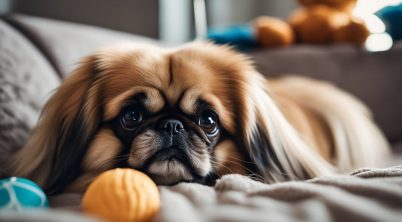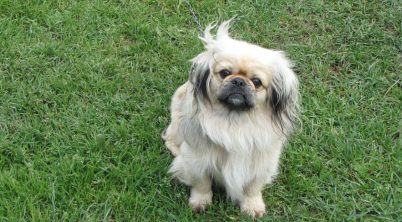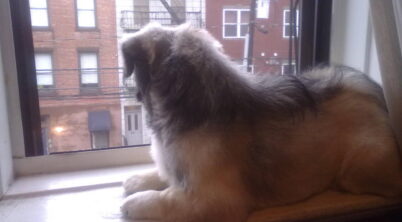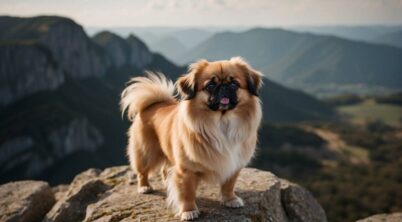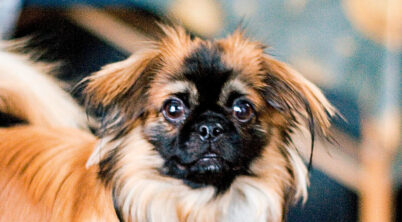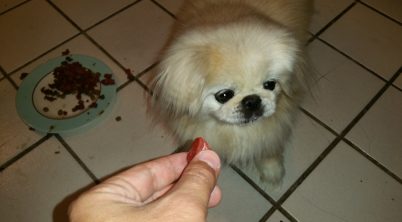The Pekingese is a breed distinguished not only by its regal and lion-like demeanor but also by its vibrant array of coat colors. Historically favored by Chinese royalty, the Pekingese has maintained its popularity over centuries, which is partially attributed to its striking and varied coloration. Among the most sought-after colors, cream stands out as a classic and elegant choice. The cream Pekingese exhibits a light, almost white fur that can range to a darker biscuit shade, with the appeal of this color lying in its soft and understated elegance.
As the canine fashion trends evolve, so do the preferences for Pekingese colors. While cream remains a top contender, other colors and combinations such as fawn, black, white, and parti-color also capture the admiration of dog enthusiasts. The coat of a Pekingese can feature solid colors, or it may be a mosaic of hues with unique markings like black masks or parti-color patterns which add to the uniqueness of each dog. The diversity in color within this breed allows potential owners to choose a Pekingese that not only matches their aesthetic preferences but also showcases the distinctive, lion-like quality that the breed is renowned for.
Table of Contents
Pekingese Most Popular Color
The Pekingese, a toy breed with a regal history, exhibits a spectrum of coat colors that are all recognized and celebrated. However, certain colors tend to stand out in terms of popularity.
Widely Favored Color:
- Red: This vibrant coat color resonates with the breed’s royal past and is often sought after by potential dog owners.
Other Popular Colors:
- Fawn: A soft, tan hue, fawn is another commonly seen color in the Pekingese breed.
- Cream: With varying intensities, cream Pekingeses radiate a calming aesthetic and are frequently preferred.
Parti-color Combinations: The Pekingese also comes in parti-color (combinations of colors), which includes:
- Black and white
- Red and white
- Fawn and white
Each parti-color variety holds its own appeal and is embraced by enthusiasts.
Markings and Accents: Unique markings contribute to the Pekingese’s popularity. Various markings such as masks or points can accentuate their coloring and add to their aesthetic appeal.
In selecting a Pekingese, prospective owners often consider how the coat color might blend with the dog’s personality and lifestyle. Although red is a prominent choice, all Pekingese colors hold a charm that attracts a wide array of dog lovers.
Color Varieties in Pekingese
The Pekingese breed boasts an impressive spectrum of coat colors ranging from common shades to more rare hues, accompanied by distinctive markings that further add to their appeal.
Standard Color Palette
The Pekingese dog presents a diversified color palette in its standard appearance. Common colors include:
- Red: A rich, vibrant coat color.
- Fawn: A warm, light brown hue.
- Black: Solid, deep and glossy.
- Cream: A light, almost white tone.
- Gray: A sleek, silver-toned color.
- Sable: Characterized by black-tipped hairs on a background of another color, often fawn or red.
- White: Pristine and elegant.
These colors can be found in various combinations, with black and tan being particularly notable for its contrast.
Rare and Unique Markings
In addition to their primary coat colors, Pekingese can exhibit unique and sometimes rare markings that enhance their individuality:
- Biscuit: A darker shade often found around the ears or back; resembles a subdued brown.
- Red Sable: A mixture of red with black-tipped hairs, presenting a luxurious appearance.
- Markings: Can include black masks or unique spots that stand out against the primary coat color.
With such a broad and distinctive range of coat colors and markings, the Pekingese truly is a canvas of canines, displaying a rich tapestry of hues that reflect their regal ancestry.
Care and Maintenance
Grooming and Coat Care
Pekingese possess a long, coarse, and double-layered coat that requires regular grooming to maintain its appearance and health. Daily brushing is essential to prevent matting and tangling, especially around the mane, which is longer than the rest of the body. They are moderate shedders, thus frequent grooming minimizes excess hair in the home. Bathing should be done monthly, or as needed, to keep their coat clean.
Trimming the hair around the eyes, mouth, and paws can prevent hygiene-related issues and enhance the dog’s comfort. It’s also important to regularly clean their ears to prevent infections.
Exercise and Training
Despite their small size, Pekingese benefit from moderate exercise to stay healthy and prevent obesity. Two short walks per day or play sessions in a safe environment can suffice their exercise needs. They enjoy interactive activities, which can also assist in training.
Training should begin early, using positive reinforcement techniques. The breed can be independent, so patience and consistency are key in training. They can excel in obedience trials, which not only provides exercise but also strengthens their behavior and social skills.
Health Maintenance
To promote good health, a balanced diet tailored to their size is necessary. Overfeeding can lead to weight gain, which is detrimental to their overall health. Regular veterinary check-ups can help in early detection and management of any potential health issues. Due to their specific physical structure, they can be prone to respiratory problems, so monitoring their health closely is crucial.
Diet and Nutrition Their diet should include high-quality dog food appropriate for their size and age to provide the necessary nutrients. Treats should be offered in moderation as part of their reward-based training, keeping in mind their daily calorie requirements.
Health and Longevity
The Pekingese, with its distinctive appearance and character, generally boasts a lifespan that spans from 12 to 15 years. Maintaining the health of a Pekingese calls for a thoughtful approach to their well-being due to their susceptibility to several breed-specific issues.
Common Health Challenges
- Eye Conditions: Their prominent eyes are prone to issues such as entropion, where the eyelid rolls inward, potentially causing irritation.
- Respiratory Issues: Their flat faces may lead to breathing challenges.
- Heart Conditions: Vigilance for heart-related conditions is important since they are common within this breed.
- Knee Problems: The breed often faces patellar luxation, a knee condition where the patella dislocates from its normal location.
To enhance a Pekingese’s health and potentially extend their longevity, owners should be proactive:
- Regular Veterinary Check-Ups: Essential for early detection and management of health issues.
- Diet and Exercise: Controlling caloric intake and ensuring regular, moderate exercise prevents obesity and supports joint health.
- Grooming: Regular grooming prevents skin issues and maintains coat health.
- Eye Care: Routine checks can help prevent complications from common eye conditions.
By understanding the Pekingese’s health landscape, owners can take informed steps to foster a long and healthy life for their pets.
Pekingese in Modern Culture
The Pekingese, once cherished by Chinese royalty, continues to charm today’s dog enthusiasts with its distinctive appearance and characteristics.
Popularity and Breed Clubs
The American Kennel Club (AKC) identifies the Pekingese as a member of the toy group, prized for its compact size and affectionate nature. Known for their lion-like mane and rolling gait, these dogs, often referred to as “lion dogs” or “sleeve dogs,” are bred for both companionship and show. Despite their small stature, the Pekingese have a strong-willed personality, making them a notable presence in breed clubs and competitive shows. The AKC currently ranks the Pekingese in terms of popularity, indicating its status among the vast array of dog breeds.
- Breed Clubs: Key to maintaining the breed’s standards and encouraging responsible breeding practices.
- Popularity: While not topping the charts, the breed maintains a dedicated following.
Representation in Media
Pekingese dogs occasionally feature in media, evoking their history as the favored pets of Chinese emperors. They are distinguished by their toy size, deep bark, and suitability for apartment living. Their unique appearance, with a marmoset-like facial structure, adds to their appeal in various entertainment forms, such as movies, games, and television. While not as prevalent as other breeds in media, when they do appear, their distinctive characteristics and noble lineage often play a significant role in their portrayal.
- Media Appearances: Sparse but memorable due to their distinctive looks and history.
- Characteristics Highlighted: Toy stature, unique gait, and their 12-14 years lifespan contribute to their special media presence.

